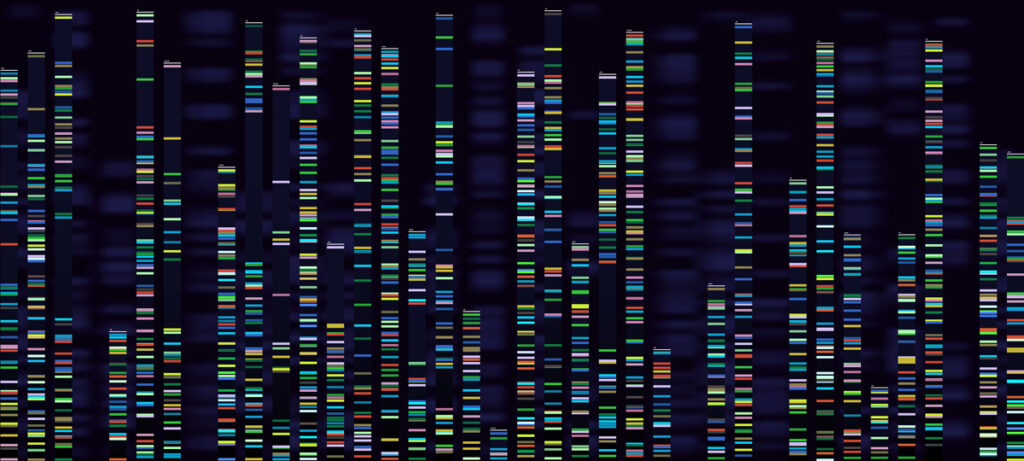April 7, 2022
The Human Genome: Version 1
If you thought the human genome was sequenced in 2000, you would be partially correct. That initial sequencing of the human genome has been built on for the last 22 years with technical advances in both sequencing technology and computational analysis leading to a nearly complete human reference genome.
However, the current standard reference genome only focuses on the euchromatic portion of the genome- that is to say, the exposed, unwound sections of DNA that are easily accessible for transcription and not associated with histones, which repress the expression of certain genes.
Missing Pieces
This remaining fraction of the genome, the heterochromatic fraction, comprises nearly 8% of the genome but is not a part of the current human reference genome. With the growing understanding of the critical role that regulation of gene expression and epigenetics plays in the functional output of the genome, researchers sought to sequence and include this “missing” portion into the human reference genome.
Accurate reference genomes are vital for robust genomic analyses. You cannot identify changes or differences in your samples of interest without an extremely high-quality reference to compare to.
A New, Fully Complete Human Reference Genome
Recently published in Science, the Telomere-to-Telomere Consortium has put forward a complete, updated human reference genome that includes assemblies with no gaps for all chromosomes except for Y and corrects for errors in previous sequences, and includes new sequence data, increases the known number of genes and repeats in the human genome.
This more complete genome includes complex regions of the genome including centromeric satellite arrays, recent segmental duplications, and more, opening up avenues for genomic analyses and various studies of these regions. The Consortium utilized several next-gen sequencing technologies to get the highest coverage and accuracy possible.
A New Generation of Studies
Sequencing methods and computational tools have advanced dramatically in the past two decades, but without a comprehensive and complete reference genome, many studies on variation or function cannot be carried out or may be missing key pieces of information. This updated reference genome can move forward in the field of genomics by opening up new study avenues and new biological questions.
Outsourcing Bioinformatic Analyses
Analyzing sequence data, including aligning and comparing genome sequences to a reference genome, can be a challenging computational task. Outsourcing your bioinformatic pipeline development to a bioinformatics service provider like Bridge Informatics can eliminate many common challenges for you and your research team. Book a free discovery call to discuss your project needs with us.
Jane Cook, Journalist & Content Writer, Bridge Informatics
Jane is a Content Writer at Bridge Informatics, a professional services firm that helps biotech customers implement advanced techniques in the management and analysis of genomic data. Bridge Informatics focuses on data mining, machine learning, and various bioinformatic techniques to discover biomarkers and companion diagnostics. If you’re interested in reaching out, please email [email protected] or [email protected].
Sources:
https://www.science.org/doi/10.1126/science.abj6987#.Ykd_lhJeHNA.linkedin




